Inspiration
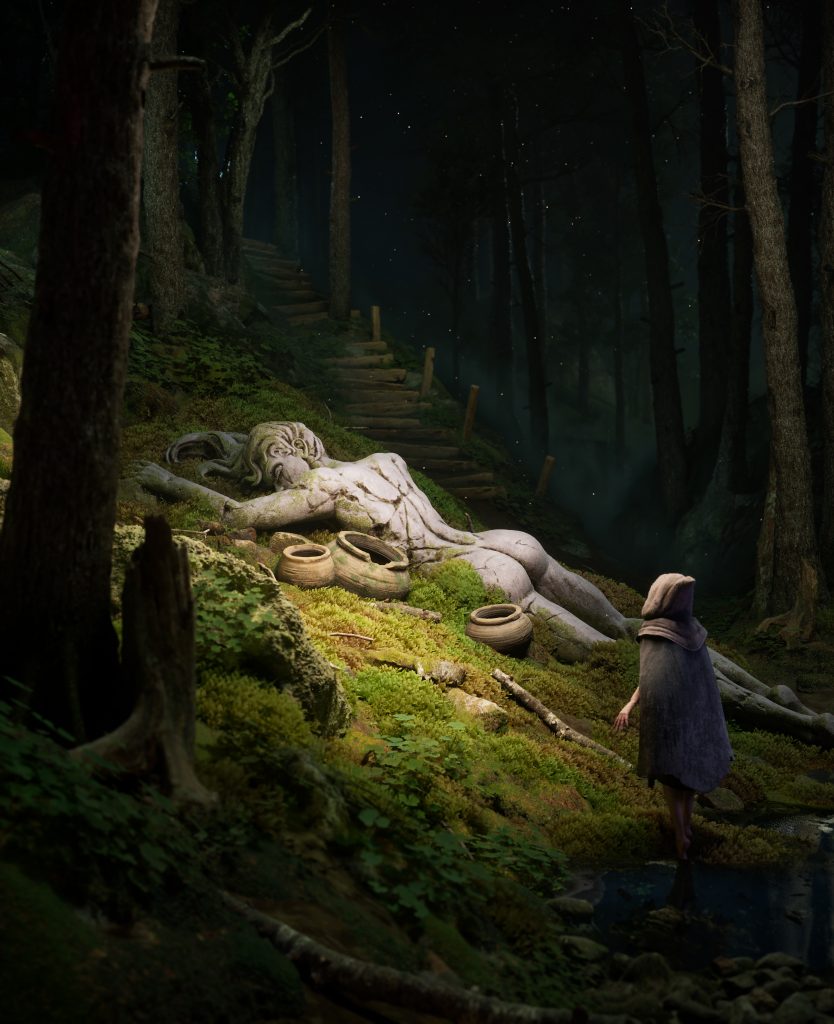
Therefore, I wanted to explore through this work “how time flows, conflicts and integrates between nature and man-made objects”. The forest becomes a symbol – it is the embodiment of time; while those artificial marks represent the brief existence of humans.
The work is not merely about decline or regeneration; rather, it is about accepting the power of time and understanding the impermanence of life. It is a visual narrative about “how time changes everything”, and also a form of self-dialogue: In the face of time, what exactly can we leave behind?
This year I am 25 years old. Suddenly, I realized that if the average human lifespan is a hundred years, I have already completed one quarter of my life.
This feeling brings about a peculiar sense of time – for the first time, I clearly realized that time does not wait for anyone. It is neither an enemy nor a friend, but a silent yet persistent force. It does not change according to human will and constantly propels everything forward, eliminating form and reconstructing meaning.
When I thought of this, I began to observe nature – forests, trees, wind, light. They seem to understand time in a much larger way: trees record time as they grow, and the tree rings are a tangible memory; while fallen leaves, weathering, and rebirth are how nature plays out the cycle of time. In contrast, the objects created by humans – metals, concrete, machinery – appear short-lived and fragile. They cannot escape the takeover of nature.

In the flow of time, nature rewrites human traces with its own algorithm.
Reference
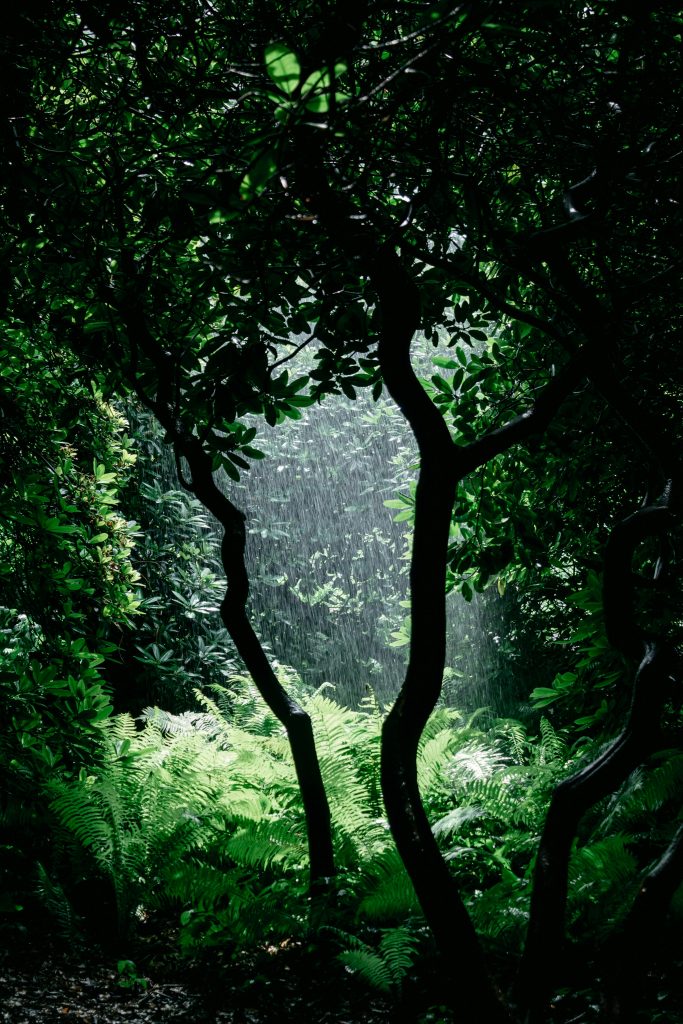
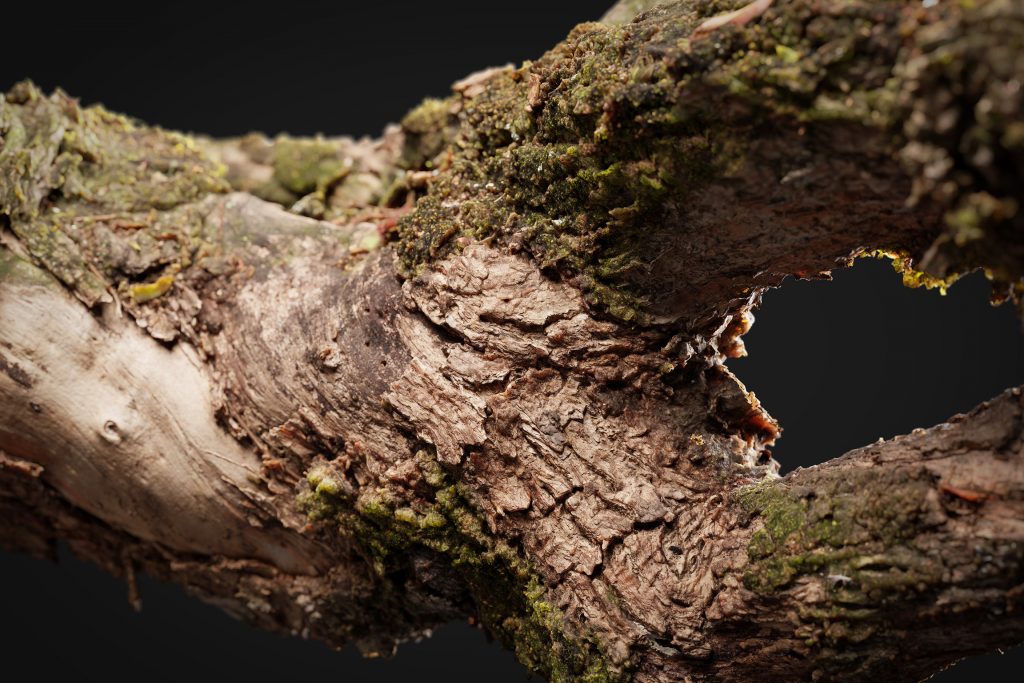
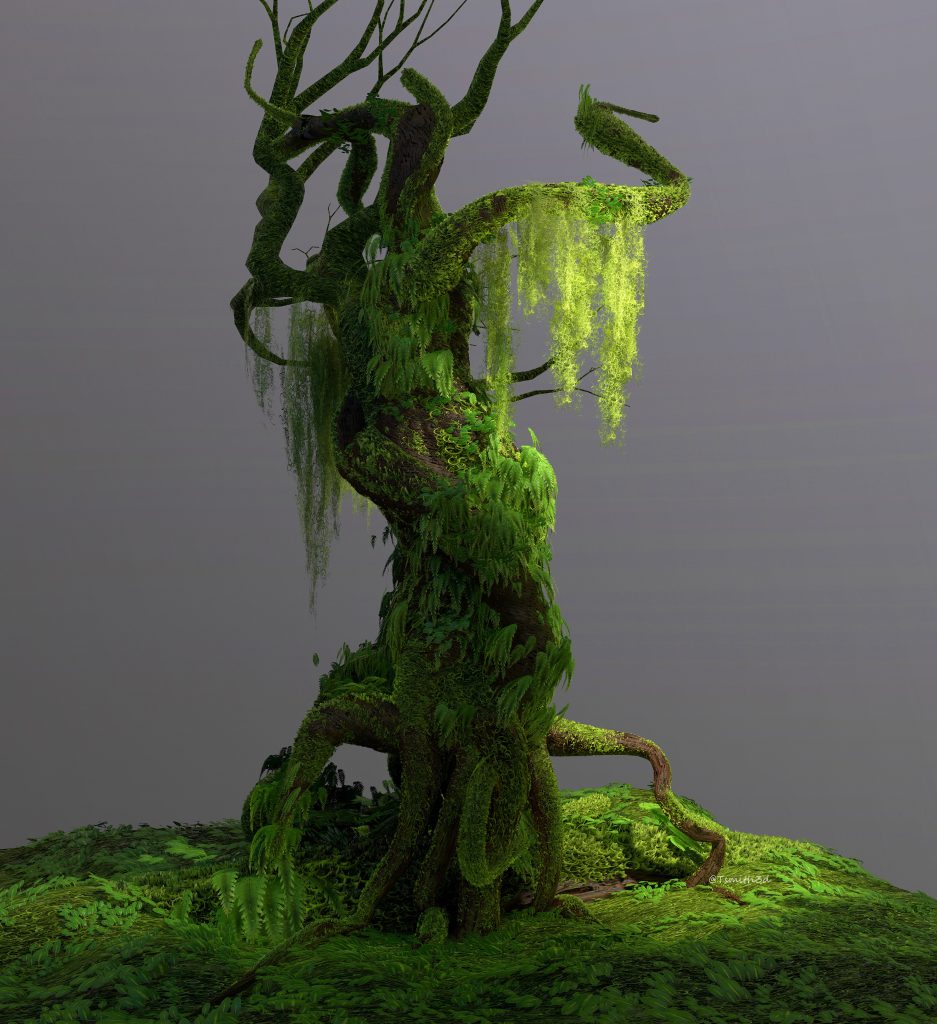
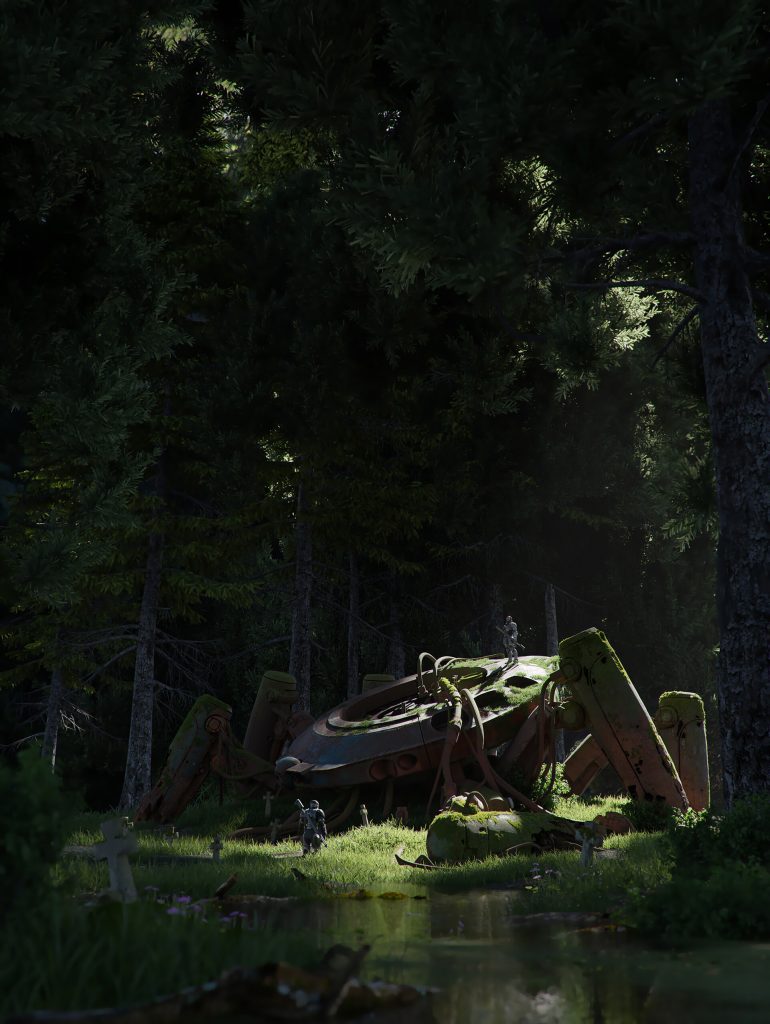

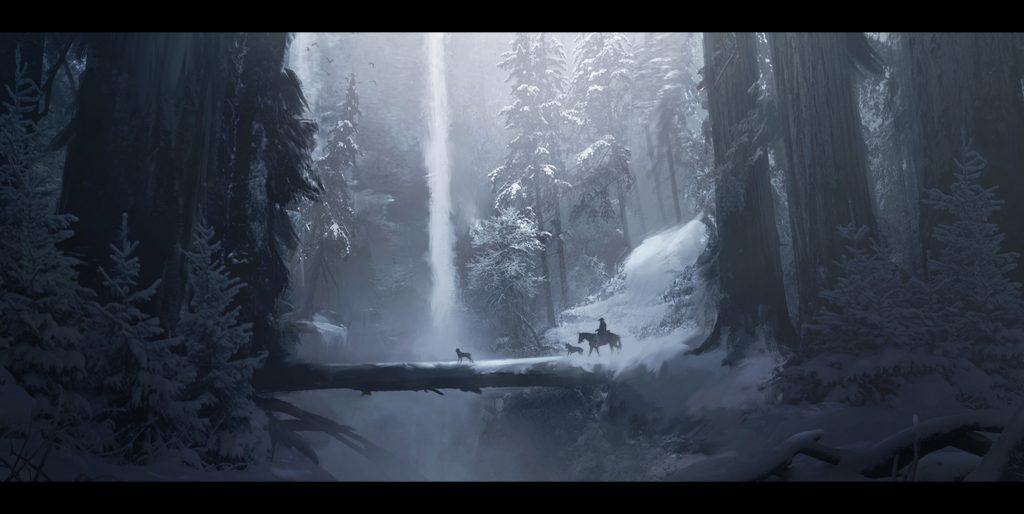
I chose the forest scenes of spring, summer, autumn and winter as visual references, hoping to express the cycle of time and the continuation of life through the changes of nature over time. The budding of spring, the flourishing of summer, the withering of autumn and the silence of winter symbolize the four stages of time, and also imply the flow of life and memory. During these seasonal transitions, trees become the most time-sensitive entities – their growth rings, textures, and the postures of their branches and leaves all record the traces of time. I also collected a large number of details of tree trunks and tree bark as references, hoping to let the audience feel the marks of time left on the surface of the objects through the changes in materials and light. These reference images are not only visual materials, but also the foundation of my research on “how time is seen in nature”.
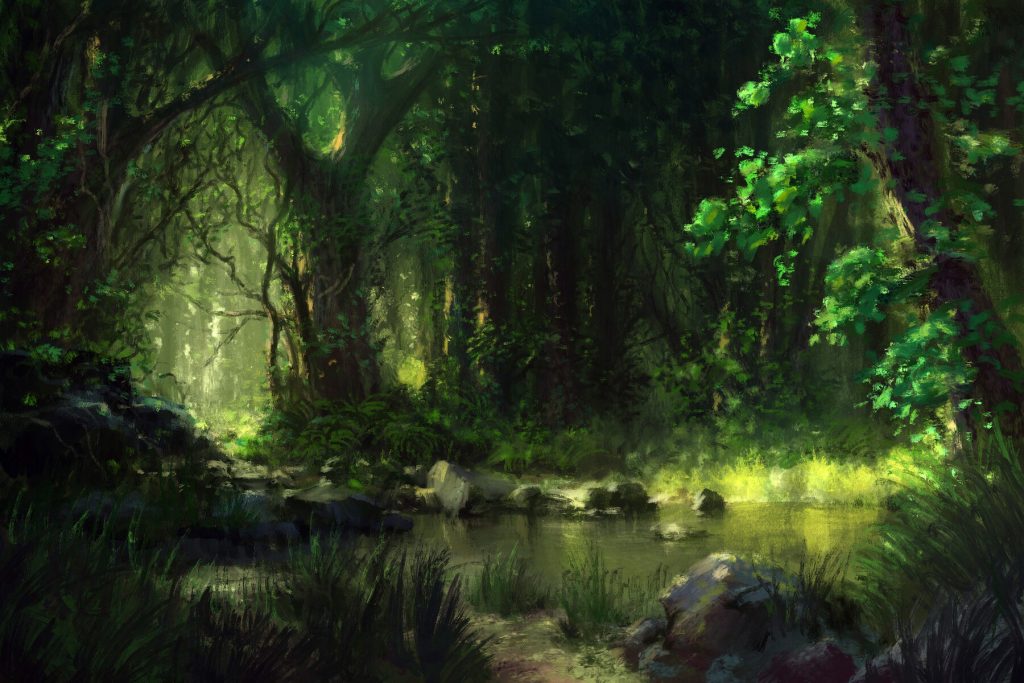


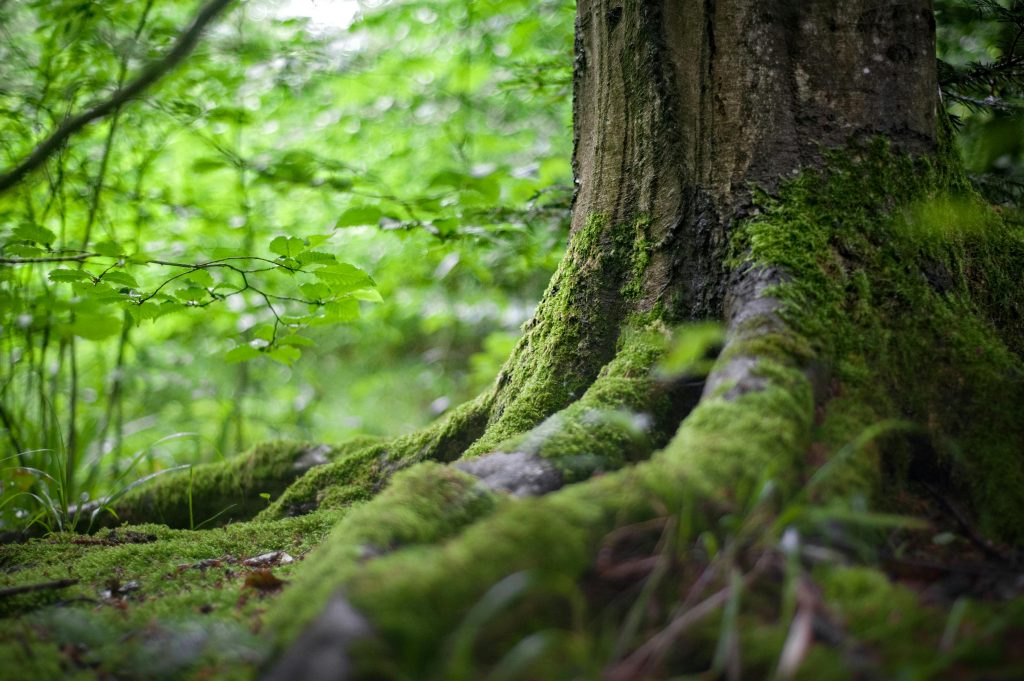


In the initial concept, my project focused on the relationship between nature and human traces. However, as I delved deeper into the themes of time and existence, I wanted to bring in a more spiritual dimension. The Eastern aesthetic understanding of impermanence, cyclic renewal, and inner stillness deeply resonates with my reflections on time. Therefore, I decided to introduce a Bodhisattva statue as the visual centerpiece, partially weathered and gradually embraced by nature. The statue symbolizes humanity’s pursuit of eternity while embodying serenity and compassion in the face of time’s inevitability. As trees grow and seasons change, the sculpture becomes one with the surrounding environment, blurring the boundary between the artificial and the natural. Through this fusion, I aim to express the poetic philosophy within Eastern thought — that time is cyclical, and in disappearance lies renewal.
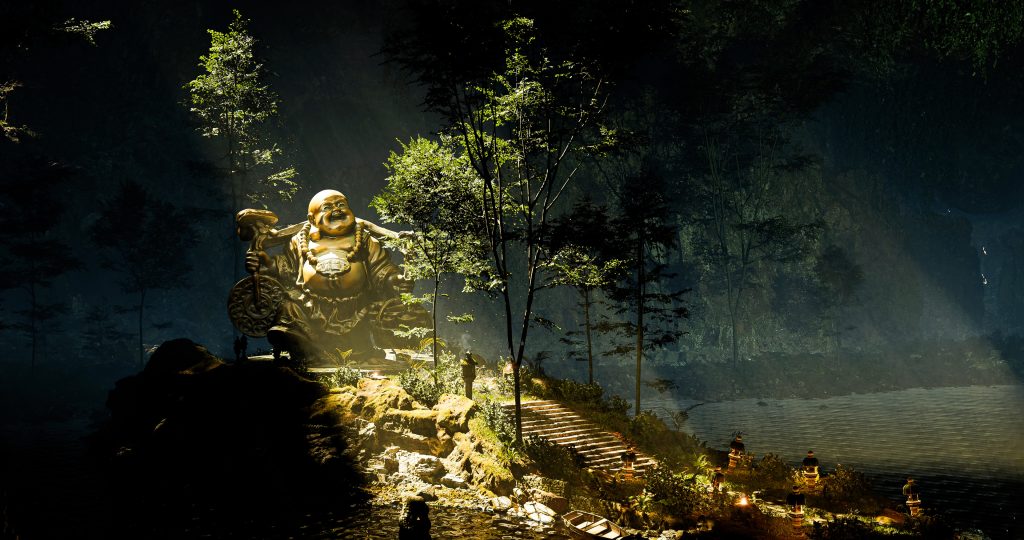
The feeling similar to that shown in the picture
The Early Stage of Creation
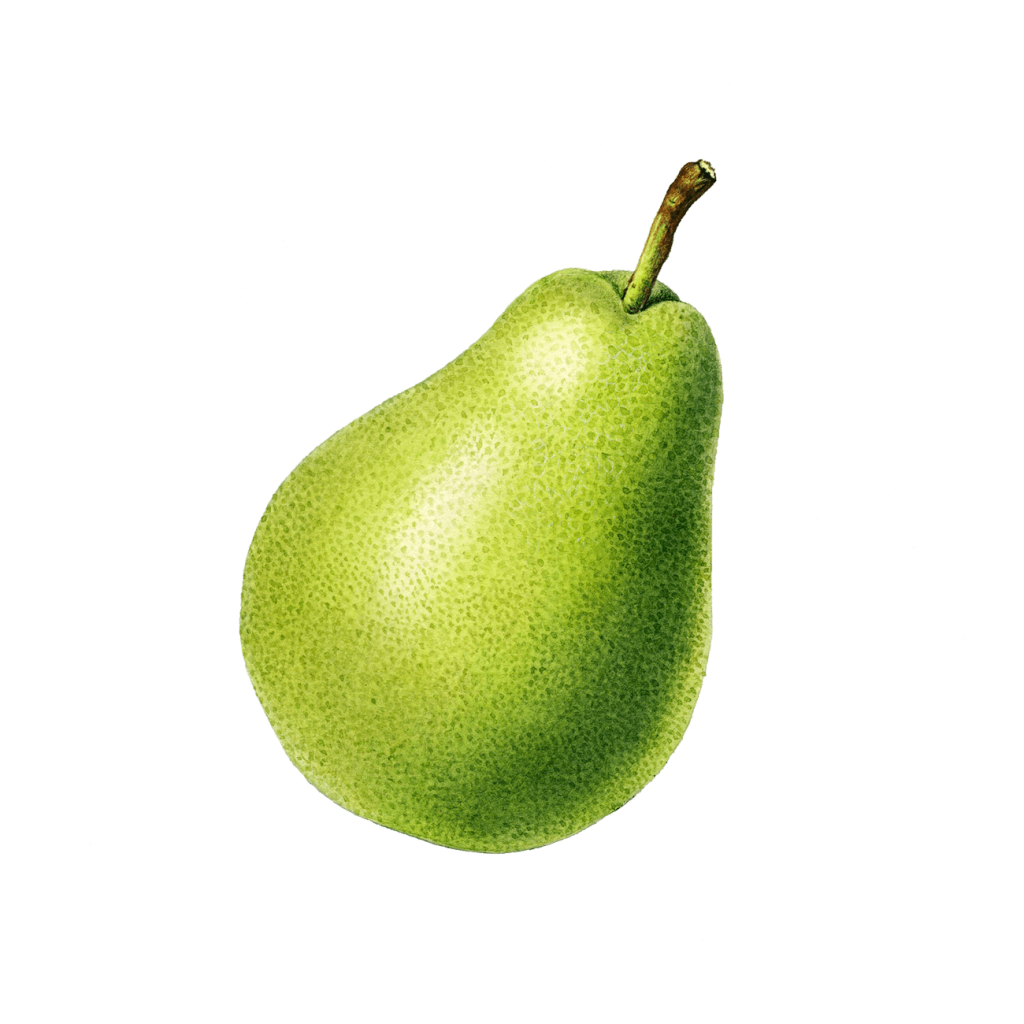
During the layout stage, I decided to base my camera setup on an animation from the 7th 3D Community Challenge. The original sequence features a smooth camera motion with elegant spatial transitions and a strong sense of depth, which aligned perfectly with my concept of expressing the passage of time through movement. After analyzing the camera path, I chose to adapt and modify it for my own project. While keeping the general flow of the original animation, I made subtle adjustments to the speed, rhythm, and pauses, allowing the motion to better reflect the contemplative and poetic tone of my narrative.
In my version, the camera travels slowly through a forest environment, where layers of foreground trees serve as visual transitions between different times of the year. As the camera moves forward, changes in lighting, color palette, and foliage density suggest the progression from spring to winter. This approach not only retains the cinematic smoothness of the original animation but also transforms it into a storytelling device that visualizes temporal change.
By reinterpreting an existing layout rather than starting from scratch, I was able to focus more on atmosphere, rhythm, and emotional resonance. The result is a simple yet layered camera movement that leads the viewer through a continuous experience of time—quiet, immersive, and ever-changing.

After entering the production stage, I began to build the main scene model in SpeedTree. The focus of this stage was to create the core visual element of “the Guanyin statue entwined by trees”. The model of the Guanyin statue was obtained from online resources. After importing it, I performed appropriate topological optimization and material adjustments to make it more in line with the realism and narrative atmosphere of the overall scene. In contrast, the tree part was entirely created by me in SpeedTree. Through parametric growth and control of branch and leaf distribution, I simulated the randomness and directionality of natural growth.
I attempted to make the branches of the trees correspond to the posture of the statue in terms of form: the entire thick tree enveloped the entire statue, exposing only parts of the body, as if nature was “embracing” time and faith in its own way. This wrapping is not only a visual compositional relationship but also symbolizes the integration of nature and human spirit. Through the growth of the trees, I hope to convey the passage of time and the acceptance of artificial objects by nature, as well as the cruelty of time. Next, I will import the model into Houdini to continue the construction of lighting, materials, and the overall atmosphere, in order to achieve that Eastern poetic sense of “time standing still yet still flowing”.
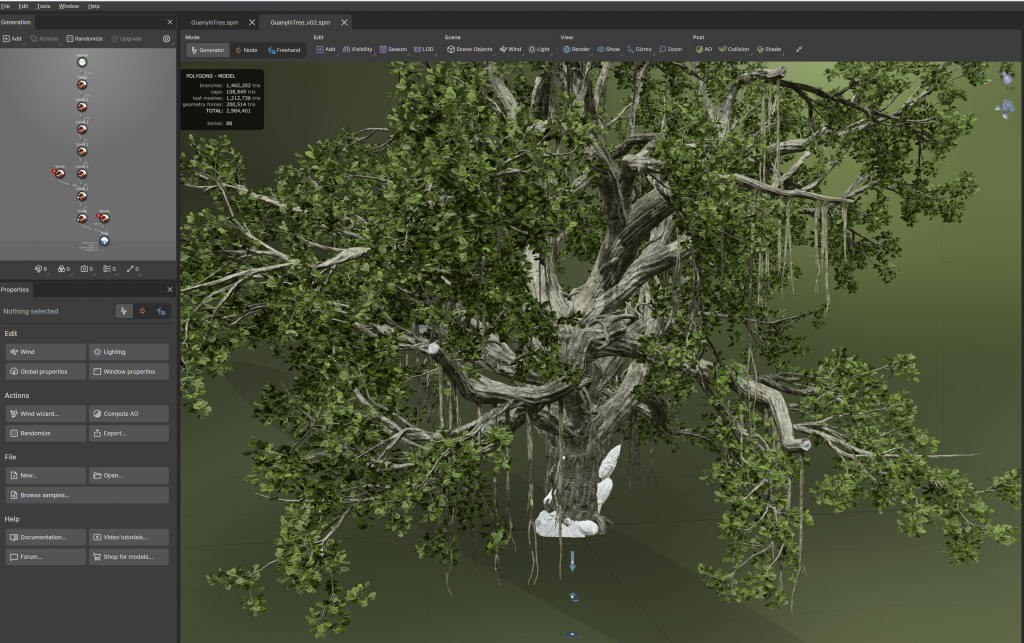

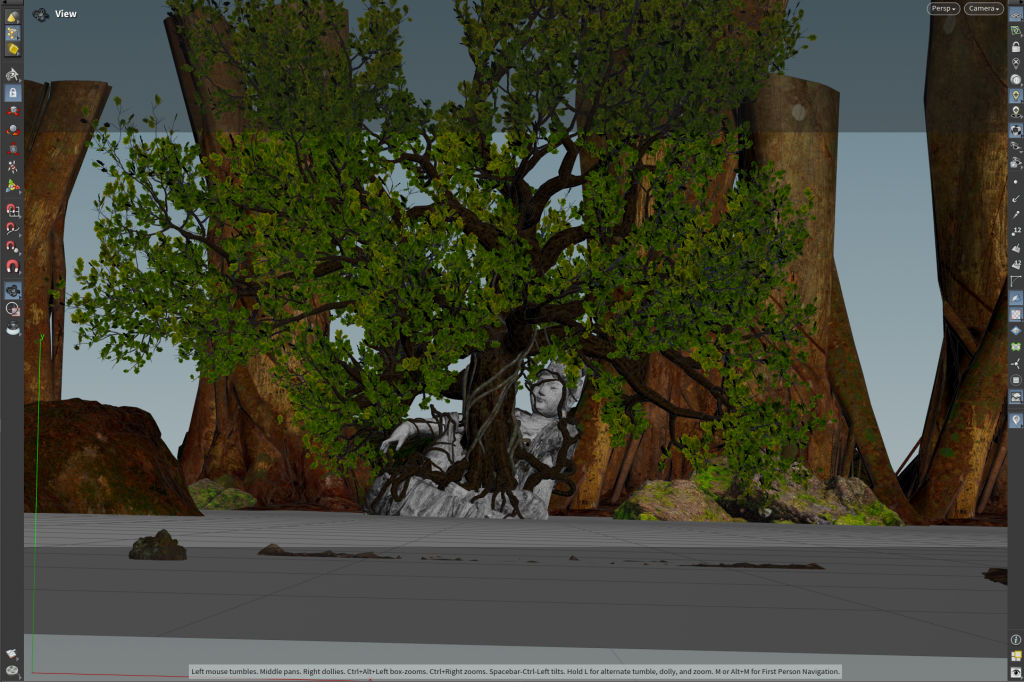
Layout Stage
During the layout stage, I began integrating the Bodhisattva statue and the tree models I created in SpeedTree into the overall environment. This process was not entirely smooth — the main tree model had an extremely high polygon count due to the detailed vines and leaf geometry, which caused significant lag and instability in my scene. To solve this, I first removed the vine leaves and optimized the trunk and branch structure before importing it into Houdini.
However, when I attempted to export the leaves from SpeedTree into Houdini, I encountered repeated export failures — the geometry and UV data were not recognized properly. After several tests, I decided to recreate the leaves directly in Houdini using procedural instancing. This approach not only solved the technical issue but also gave me more control over the leaf distribution and animation later in the simulation stage.
The rest of the environment — including the rocks, terrain, and background trees — was built using assets downloaded from online libraries. I carefully adjusted their placement, scale, and color to match the composition and mood I envisioned. The Bodhisattva statue, partially wrapped by the main tree, remained the central focus of the scene, symbolizing the merging of human spirituality and natural reclamation.
Through this process, I learned how to balance visual ambition with technical feasibility, and how problem-solving can become part of the creative flow. The final layout not only established a strong narrative foundation but also reflected the patience and adaptability required in the making of a VFX environment.
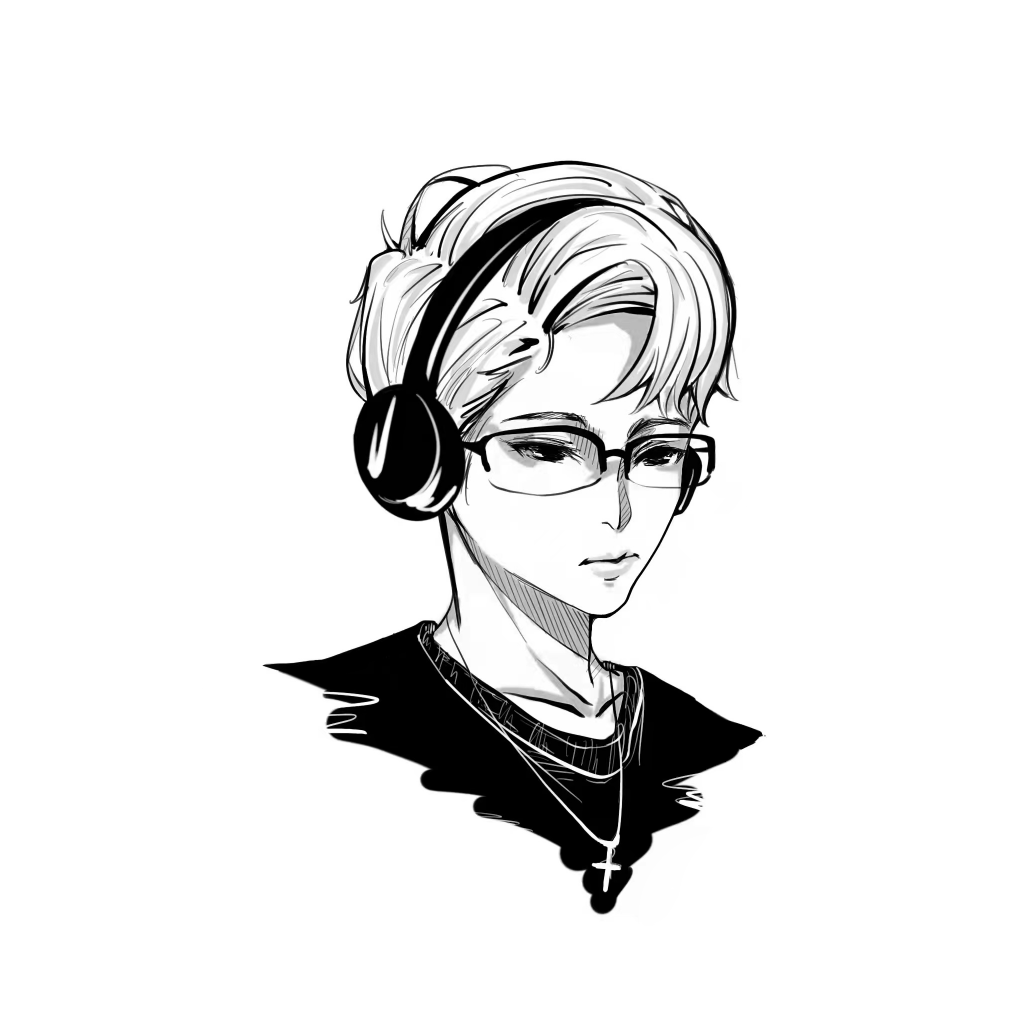

Leave a Reply